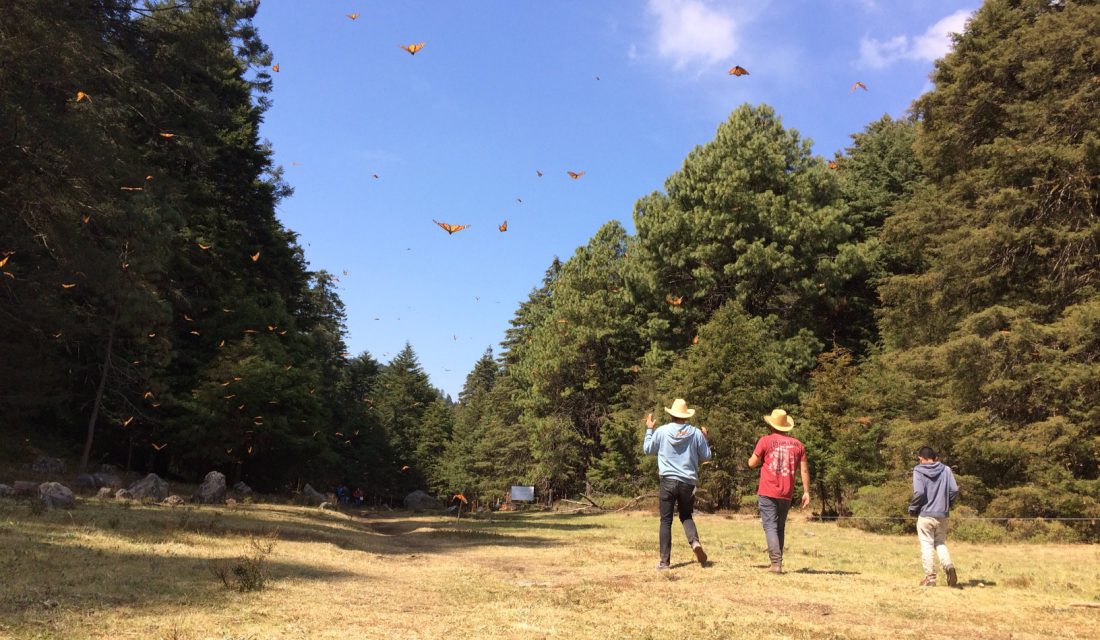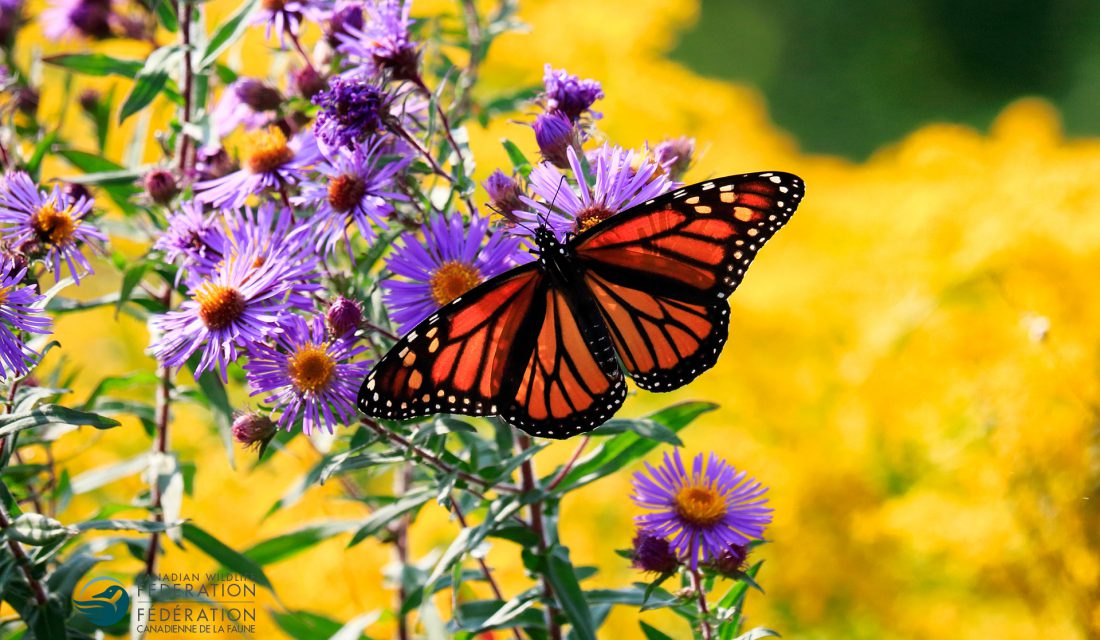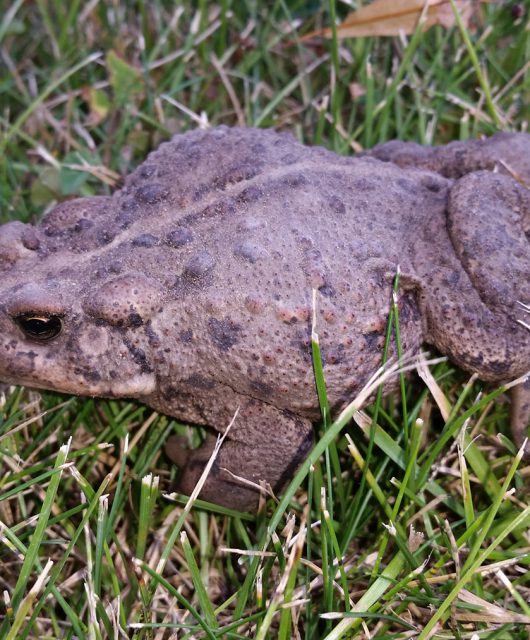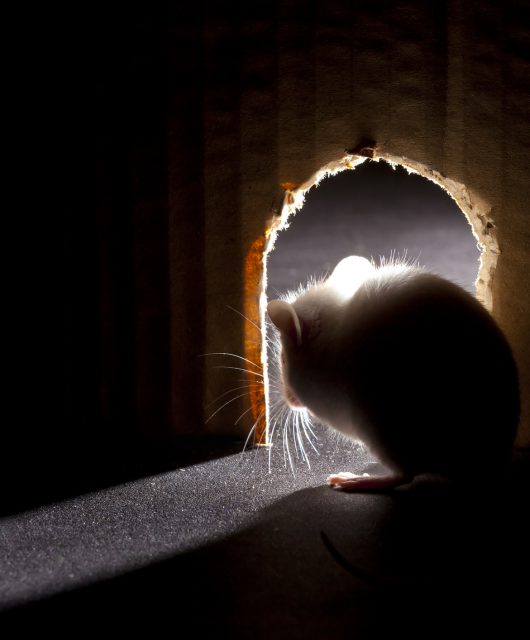The overwintering Monarch population in Mexico has increased. Let’s help them when they make their trip home to Canada!
The monarch butterfly boasts a 4,000 kilometre migratory trek – that’s 95 marathons! They begin their journey in the north, at the end of summer or early autumn. While western Monarchs aim to overwinter in California’s pine, cypress and eucalyptus trees, Monarchs east of the Rockies head to Mexico’s oyamel fir forests for the winter months.
Losses and Gains
The overall Monarch population has declined about 90 per cent since the 1990s. The Monarch was assessed as Endangered in Canada in 2016 by the Committee on the Status of Endangered Species in Canada (COSEWIC). The federal government has not yet decided whether to accept this recommendation and list the species officially as Endangered.
However, a recent count has shown that after years of declines, the number of Monarchs in the Mexican wintering area has increased.

“The latest assessments in Mexico show that 14 colonies of overwintering butterflies occupied a total area of 6.05 hectares of the oyamel fir forest,” says Carolyn Callaghan, Senior Conservation Biologist, Terrestrial Wildlife with the Canadian Wildlife Federation “This is a 144 per cent increase over the 2018 result, and the highest area recorded since 2006.”
The World Wildlife Fund Mexico in collaboration with partner organizations has been conducting the annual assessment of the oyamel fir forest since 1995.
The observed increase is thought to be due to favorable weather conditions across the eastern range throughout the spring, summer and fall of 2018. It may also be due in part to recent widespread and large-scale efforts across the US to restore thousands of hectares with milkweed and nectar plants.
“This is a much-needed and promising result indicating that Monarch did have the good year that many of us observed in southern Canada. However, millions of hectares of Monarch habitat have been lost in recent decades due to increases in herbicide use, changes in agriculture and other development. If positive Monarch population trends are to continue, then Canada needs to do its part in improving Monarch habitat at a landscape scale.”
Canadian Habitat is Key
A recent study using stable isotopes showed that a significant percentage of the Monarchs overwintering in Mexico originated in southern Canada. Yet Canada lags far behind in recovery efforts for the beleaguered species, says Callaghan.
Habitat restoration is already happening across the United States, where thousands of hectares of roadsides and utility corridors are being planted with milkweed and other nectar-bearing wildflowers to act as both breeding areas and fuel stops for migrating butterflies. State and federal departments of transportation, energy and agriculture are all actively involved.
The roadsides and utility corridors are also mowed and sprayed less, providing cost savings as well as crucial habitat for Monarch and many other pollinating insects. And now governments in the US are providing support for farmers to grow milkweed and nectaring plants to help the Monarch recover.
“CWF and dedicated partners are working hard to improve and increase habitat for Monarch in eastern Ontario,” she says. “We are hoping to expand our pilot project to help restore more of the migration network in southern Canada. With support from the Ontario Trillium Foundaton and the partnership of HydroOne, Lanark County, and the National Capital Commission, we are making habitat gains. With the partnership from the federal and provincial governments, we can play our part in restoring the Monarch migration network across the whole breeding range.” And that really would be good news for Monarchs.




4 comments
I have a Milkweed section in my back yard, but have not seen any Monarchs. Do they come to southern Alberta???
Hi Diane
Monarch show up in southern Alberta on rare occasions only.
Lanark County is mentioned as assisting this butterfly program but they spray the road sides to kill wild parsnip. This spray must kill all plants and including milkweed. They need to be reminded about the overall result of spraying herbicides. Wild parsnip is over rated.
Well done and well written. So glad to hear inroads are being done to help the Monarchs recuperate and prosper again. Thank you for all you do